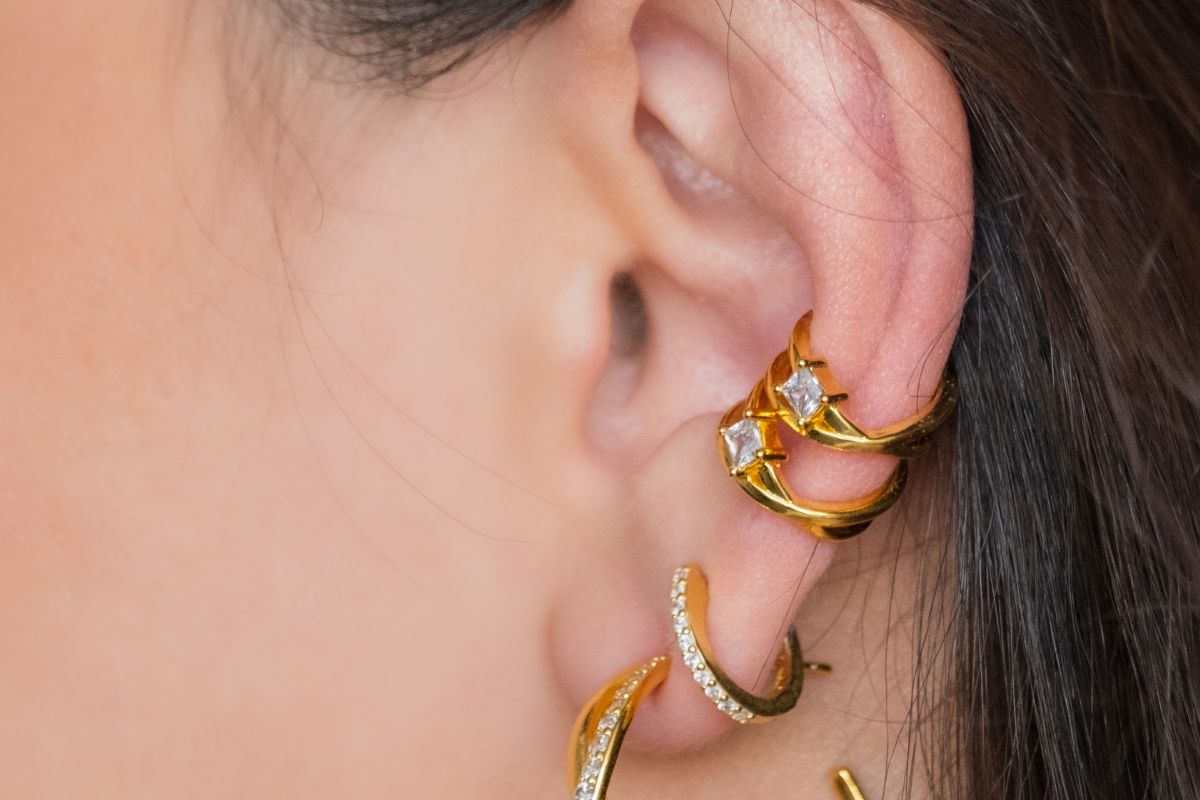Ear stretching is a popular body modification that requires patience, proper technique, and the right tools to avoid complications.Read More
Ear stretching, also known as ear gauging, involves gradually enlarging a healed ear piercing to accommodate larger jewellery. This process should be done slowly to allow the skin to stretch naturally without causing damage. When done correctly, ear stretching can be a safe and stylish modification, but rushing the process or using improper tools can lead to pain, tearing, and even infections. Investing in a high-quality Ear Dead Stretching Kit is crucial for a safe and effective stretching journey. These kits typically include tapers, tunnels, and plugs in various sizes, allowing you to gradually increase the gauge of your piercing. Look for kits made from materials such as surgical steel, glass, or titanium, as these are hypoallergenic and reduce the risk of irritation or infection. One of the most important rules of ear stretching is to go slow. Ideally, you should wait at least 6-8 weeks between each size increase to allow the skin to heal and adapt. Stretching too quickly can cause blowouts (a condition where the inner tissue is forced out), tearing, or excessive scar tissue formation. Applying a safe, skin-friendly lubricant such as jojoba oil or vitamin E oil to the taper or plug can help ease insertion and minimise discomfort. This also prevents unnecessary friction, reducing the chances of microtears in the skin. Keeping your ears and jewellery clean is essential for preventing infections. Wash your ears daily with mild soap and water, and regularly disinfect your plugs or tunnels. Avoid using alcohol-based cleaners, as these can dry out the skin and cause irritation. Skipping gauge sizes can lead to serious complications such as torn earlobes, excessive scarring, and prolonged healing times. Always follow the correct sizing sequence and allow enough healing time between stretches. Pain, swelling, or persistent discomfort are signs that you may be stretching too fast. If you experience any of these symptoms, downsize to the previous gauge and allow your ears to recover before attempting to stretch again. Impatience is one of the biggest mistakes in ear stretching. Rushing the process can cause irreversible damage and increase the risk of infections. Cheap or poor-quality jewellery made from acrylic or silicone can cause irritation, allergic reactions, or bacterial buildup. Stick to high-quality materials such as stainless steel, glass, or titanium. If you notice excessive redness, pus, or a foul smell, your ears may be infected. Clean the area with saline solution and avoid further stretching until the infection clears. If symptoms persist, consult a professional piercer or healthcare provider. Once you’ve reached your desired gauge size, maintaining your stretched ears is just as important as the stretching process itself. Keep your lobes moisturised with natural oils, wear high-quality jewellery, and periodically massage your ears to promote blood circulation and maintain skin elasticity. Stretching your ears safely requires patience, the right tools, and proper aftercare. An Ear Dead Stretching Kit is an excellent investment for those looking to achieve their desired gauge size while minimising risks. By following safe stretching techniques, listening to your body, and maintaining good hygiene, you can enjoy healthy, well-stretched ears for years to come.Understanding Ear Stretching
Choosing the Right Ear Dead Stretching Kit
What to Look for in a Stretching Kit:
Safe Ear Stretching Techniques
1. Be Patient and Stretch Gradually
2. Use Lubrication for Easy Insertion
3. Clean Your Ears and Jewellery Regularly
4. Avoid Skipping Sizes
5. Listen to Your Body
Common Mistakes to Avoid
Stretching Too Quickly
Using Unsafe Materials
Ignoring Signs of Infection
Aftercare and Long-Term Maintenance
Final Thoughts
Healthy Ear Stretching: Safe Practices with an Ear Dead Stretching Kit

Ear stretching is a popular body modification that requires patience, proper technique, and the right tools to avoid complications.Read More




